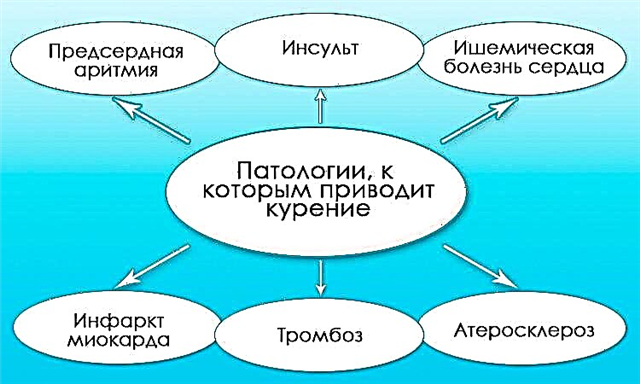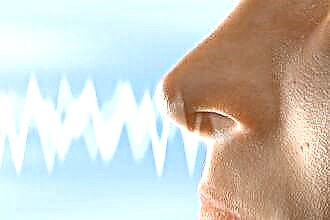Hydrogen peroxide is a representative of peroxides with pronounced antioxidant properties. The drug normalizes the pH level in the mucous membranes, which inhibits the activity of opportunistic microorganisms. Due to its pronounced anti-inflammatory and antiseptic effect, a weakly concentrated peroxide solution is used within the framework of traditional and alternative medicine to relieve local manifestations of ENT diseases.
 Treatment of the common cold with hydrogen peroxide contributes to the regression of catarrhal processes in the nasopharyngeal mucosa.
Treatment of the common cold with hydrogen peroxide contributes to the regression of catarrhal processes in the nasopharyngeal mucosa.
The components of the agent destroy the cellular structures of pathogenic agents, which leads to a decrease in their number.
An increase in local immunity affects the rate of epithelialization of the affected tissues and, accordingly, the speed of recovery.
Pharmacodynamics
According to many otolaryngologists, nasal peroxide is one of the safest anti-inflammatory drugs to help eliminate rhinitis. The disinfectant solution is one of the effective antiseptics for local and external use. It has pronounced anti-cold properties, namely:
- prevents the development of pathogenic microbes, fungi and viruses, which prevents intoxication of the body;
- takes part in accelerating carbohydrate, lipid and protein metabolism, thereby accelerating cellular metabolism; promotes the elimination of free radicals from the body, which leads to the strengthening of immunity;
- normalizes the acid-base balance in the treated cavities, thereby increasing local immunity;
- saturates the affected tissues with oxygen, which has a beneficial effect on the rate of their regeneration;
- dilates blood vessels, due to which blood circulation is accelerated and nutrition of the affected tissues is enhanced;
- eliminates disturbances in the electrolyte balance, which leads to the normalization of redox reactions.
Important! For therapeutic purposes, it is allowed to use a 3% hydrogen peroxide solution. A more concentrated solution can cause burns in the nasopharynx.
Operating principle
 The immune system eliminates the pathogenic flora at the expense of killer cells, which, when identifying pathogens, attack them with peroxides. Oxidative processes are the main "weapon" by which the number of conditionally pathogenic bacteria, protozoa, viruses, etc. is controlled in the body. An increase in the level of toxins in the blood stimulates the production of hydrogen peroxide by leukocytes, which is capable of destroying almost all types of foreign agents entering the body.
The immune system eliminates the pathogenic flora at the expense of killer cells, which, when identifying pathogens, attack them with peroxides. Oxidative processes are the main "weapon" by which the number of conditionally pathogenic bacteria, protozoa, viruses, etc. is controlled in the body. An increase in the level of toxins in the blood stimulates the production of hydrogen peroxide by leukocytes, which is capable of destroying almost all types of foreign agents entering the body.
Why is it worth treating a cold with hydrogen peroxide? Unlike most nasal drops, the drug does not contain components that provoke severe allergic reactions. Once in the blood, peroxide interacts with leukocytes and blood plasma, after which it binds to erythrocytes.
In the process of interaction with blood corpuscles, peroxide decomposes into atomic oxygen and ordinary water, which contributes to strong tissue oxidation. As a result, the destruction of pathogenic cells in the ciliated epithelium occurs, as a result of which a regression of inflammation is observed.
The use of peroxide according to I.P. Neumyvakin
I. Neumyvakin is a professor of medical sciences, who created more than 85 copyright inventions and wrote at least 200 scientific papers. For the first time, it was he who spoke about the advisability of treating colds with peroxide. The professor has developed several methods of local and external application of the drug, thanks to which it is possible to stop the manifestations of acute rhinitis within a few days.
Important! It is undesirable to continue treatment with peroxide if lacrimation and intense sneezing occur.
According to the expert, the treatment of the common cold with peroxide should be started at the initial stages of the development of ENT disease. To prevent the occurrence of a runny nose, it is advisable to use an antiseptic when carrying out medical and preventive procedures, which consist in rinsing the nose and instilling the diluted drug into the nasal passages.
Cold drops
This method of relieving the symptoms of the common cold was first proposed by I. Neumyvakin in the 70s of the XX century. Since then, hydrogen peroxide has been actively used in traditional and informal medicine for the treatment of colds. At the first symptoms of catarrhal processes in the maxillary and frontal sinuses, you need to do the following:
- dilute 10 drops of the drug in 1 tbsp. l. boiled water;
- inject 3-4 drops of the solution into each nostril;
- alternately blocking the nostrils, blow out all the mucus from the nasal passages;
- do not eat food within 15-20 minutes after the procedure.
An antiseptic promotes thrombosis, so it cannot be used by people with increased blood clotting.
To speed up the healing process, the procedure must be performed at least 3-4 times a day for 5 days. In the absence of positive results or deterioration of health, you need to be examined by an ENT doctor. Untimely started treatment leads to the development of bacterial sinusitis, which can be eliminated only with the passage of a course of antibiotic therapy.
Rinsing the nose
 Washing is an effective method of eliminating inflammatory processes in the nasopharynx. The systematic carrying out of the procedure promotes the washing out of pathogens from the foci of inflammation, as a result of which the regression of catarrhal processes and epithelialization of the mucous membranes is accelerated. In turn, the restoration of local immunity, due to oxidative processes in the cells, prevents the recurrence of the disease.
Washing is an effective method of eliminating inflammatory processes in the nasopharynx. The systematic carrying out of the procedure promotes the washing out of pathogens from the foci of inflammation, as a result of which the regression of catarrhal processes and epithelialization of the mucous membranes is accelerated. In turn, the restoration of local immunity, due to oxidative processes in the cells, prevents the recurrence of the disease.
For the procedure, experts recommend using a 20 ml syringe or a rubber syringe. To achieve the desired results, it is advisable to rinse the nose at least 2 times a day, taking into account the following recommendations:
- add 1 tsp of peroxide to 50-60 ml of boiled water;
- take the solution into the syringe;
- tilting your head, inject liquid into the upper nostril;
- flush the second nostril in the same way;
- lubricate the nasal passages with vegetable oil.
Do not inject liquid into the nose under high pressure to prevent the solution from entering the Eustachian tube.
Important Tips
When instilling hydrogen peroxide into the nose with a cold, you need to take into account the recommendations of specialists. Ignoring the rules for using the drug can lead to ineffectiveness of therapy and the occurrence of adverse reactions. To avoid negative consequences, you need to pay attention to the following points:
- before instilling the solution, the nasal passages must be cleared of accumulated mucus as much as possible;
- only 3% hydrogen peroxide solution can be used to treat rhinitis;
- before use, it is advisable to slightly warm the drug in order to prevent a sharp narrowing of blood vessels;
- upon completion of the treatment procedures, you cannot go outside for 1.5-2 hours;
 in case of dryness of the mucous membrane, use oil-based drops.
in case of dryness of the mucous membrane, use oil-based drops.
Taking into account the above recommendations, relief of cold symptoms occurs on the 3-4th day of therapy.
However, experts warn that hydrogen peroxide cannot become a full-fledged substitute for topical preparations.
This is especially true for the treatment of sluggish rhinitis caused by the development of aerobic bacteria.
Contraindications
An antiseptic helps to accelerate oxidative reactions in the body, which can lead to minor side reactions. Overdose of drugs leads to lacrimation, sneezing and swelling of the mucous membrane. To prevent any deterioration in your well-being, place a small amount of liquid on your skin before using the peroxide. If hyperemia, itching and swelling do not occur within an hour, use the drug as directed.
According to experts, hydrogen peroxide can be used for uncomplicated rhinitis. In addition, in pediatric therapy, it is used exclusively as directed by a pediatrician. Due to the hypersensitivity of the skin and mucous membranes, the components of the product can provoke allergies.

 in case of dryness of the mucous membrane, use oil-based drops.
in case of dryness of the mucous membrane, use oil-based drops.

